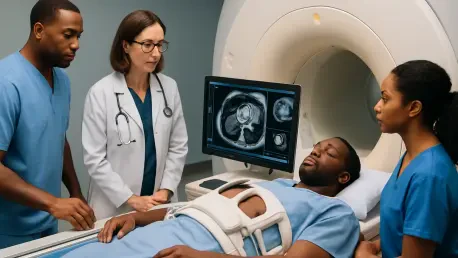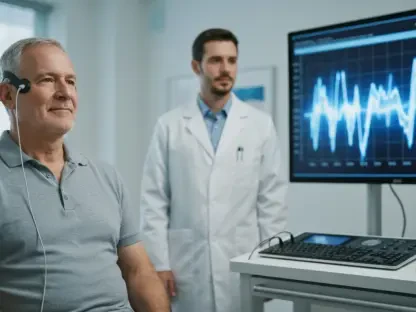In a world where heart disease remains a leading cause of death, access to advanced diagnostic tools can be the critical difference between life and loss for countless individuals in communities far from major medical hubs. Imagine a small-town resident discovering a critical heart condition without ever leaving their neighborhood, thanks to cutting-edge technology now available at local hospitals. This is the reality unfolding in the southeast Twin Cities metro area, where Allina Health has introduced state-of-the-art Cardiac MRI services at Hastings Regina Hospital in Hastings, Minnesota. This pioneering move is reshaping the landscape of community healthcare by bringing high-level diagnostics to the doorstep of those who need it most. It’s not just about convenience; it’s about transforming outcomes for heart patients through early detection and precise treatment. This development signals a broader shift in how specialized care can be delivered, challenging the notion that top-tier medical services are exclusive to urban centers.
Overcoming Distance in Heart Care Access
The introduction of Cardiac MRI technology at community hospitals like Hastings Regina Hospital marks a significant stride in dismantling the geographic barriers that often hinder access to specialized heart care. For many residents in suburban or rural areas, obtaining advanced diagnostics previously required long, costly, and stressful journeys to urban medical centers. By integrating this sophisticated imaging technology locally, Allina Health eliminates the burden of travel, ensuring that high-quality care is within reach for a wider population. This initiative aligns with a growing trend of decentralizing healthcare services, prioritizing accessibility without compromising on the standard of medical attention. The impact is profound, as it allows patients to focus on their health rather than the logistics of getting to a distant facility, potentially leading to better engagement with necessary medical interventions.
Community response to this advancement has been overwhelmingly positive, reflecting a deep appreciation for having such critical resources close to home. The presence of Cardiac MRI in a local setting not only boosts trust in the regional healthcare system but also encourages individuals to seek timely evaluations for heart concerns. This shift could result in earlier diagnoses of conditions that might otherwise go undetected until they become severe. Furthermore, the convenience of local access may improve adherence to follow-up appointments and treatment plans, fostering a culture of proactive health management. As more people take advantage of these services, the overall cardiovascular health of the region stands to benefit, potentially reducing the burden of heart disease on both individuals and the healthcare infrastructure.
Unleashing the Power of Advanced Imaging
At the core of this healthcare revolution lies the remarkable capability of Cardiac MRI technology, which offers an unparalleled level of detail in assessing heart health compared to conventional methods like echocardiograms or stress tests. This imaging tool provides comprehensive, three-dimensional views of the heart’s structure, including valves, muscles, and major blood vessels such as the aorta. Enhanced by techniques like pharmacologic stress testing, which simulates the heart’s response to exertion, and gadolinium contrast agents for sharper images, Cardiac MRI equips clinicians with critical insights into cardiac function under various conditions. This precision enables the identification of complex issues—ranging from heart failure to genetic arrhythmias—long before symptoms become life-threatening, paving the way for tailored and effective treatment strategies.
The significance of such detailed diagnostics extends far beyond mere imagery; it directly translates to improved patient outcomes in community settings. Early detection facilitated by Cardiac MRI can prevent the progression of cardiovascular diseases, reducing the likelihood of emergency interventions, prolonged hospital stays, or even fatalities. For a community hospital to harness this technology is a bold leap forward, redefining the scope of care that smaller facilities can provide. It empowers local healthcare providers to manage intricate cases with confidence, ensuring that patients receive world-class attention without needing referrals to distant specialty centers. This advancement not only elevates the standard of care but also sets a new benchmark for what regional hospitals can aspire to achieve in combating heart disease.
Driving Economic and Competitive Shifts
The deployment of Cardiac MRI in community hospitals sends notable ripples through the medical technology and pharmaceutical sectors, highlighting the economic implications of healthcare innovation. Manufacturers of MRI equipment, such as Siemens Healthineers and GE HealthCare, are poised to benefit from heightened demand as more facilities seek to adopt similar advanced systems. Similarly, companies producing contrast agents, like Bayer AG, may experience increased sales driven by the expanding use of enhanced imaging techniques. This initiative underscores how advancements in medical diagnostics can fuel growth in related industries, creating opportunities for innovation and investment. It’s a clear signal that the integration of cutting-edge tools in smaller hospitals can have far-reaching effects on market dynamics.
However, this progress also introduces competitive challenges, particularly for smaller diagnostic centers that lack the resources to implement comparable technologies. As patient volumes potentially shift toward well-equipped facilities like Hastings Regina Hospital, these smaller entities may struggle to maintain their foothold in the local healthcare market. This disparity raises important questions about equity in healthcare delivery, as the gap between well-funded institutions and under-resourced ones could widen. The situation calls attention to the need for strategies that ensure broader access to technological advancements, preventing an uneven distribution of high-quality care. Balancing innovation with fairness remains a critical consideration as more community hospitals look to upgrade their diagnostic capabilities in the coming years.
Pioneering a New Era for Local Hospitals
Allina Health’s initiative at Hastings Regina Hospital serves as a compelling model for other community hospitals aiming to elevate their cardiovascular services to new heights. By establishing a regional hub for advanced heart diagnostics, this program demonstrates the transformative potential of strategic investments in smaller facilities. It challenges the traditional hierarchy of healthcare delivery, proving that local hospitals can offer specialized care on par with urban centers when equipped with the right tools. This could inspire a wave of similar efforts across various health systems, encouraging a reimagining of what community-based care can achieve. The ripple effect might redefine regional healthcare landscapes, making advanced diagnostics a standard rather than an exception.
This development also ties into larger industry trends, such as the growing role of artificial intelligence and data analytics in enhancing diagnostic precision. As technology continues to evolve, community hospitals adopting these innovations stand to play a pivotal role in addressing healthcare disparities by ensuring that cutting-edge care is not confined to metropolitan areas. The potential for improved population health management is immense, as localized access to high-quality diagnostics can lead to better disease prevention and management strategies. Looking ahead, the success of such programs could catalyze policy changes that support the decentralization of advanced medical services, ensuring that geographic location no longer dictates the level of care a patient receives.
Reflecting on a Milestone in Heart Health
Looking back, the rollout of Cardiac MRI technology at Hastings Regina Hospital by Allina Health emerged as a defining moment in the journey toward equitable heart care in community settings. This initiative bridged critical gaps in access, allowing residents of the southeast Twin Cities metro area to benefit from world-class diagnostics without the burden of travel. It showcased the power of precision imaging in altering the trajectory of cardiovascular diseases through early intervention. For the future, the focus should shift to scaling such advancements across more regions, ensuring that operational challenges like high costs and staffing needs are addressed through innovative funding models and training programs. Collaboration between healthcare providers, technology firms, and policymakers will be essential to sustain this momentum, ultimately reducing the national burden of heart disease one community at a time.









